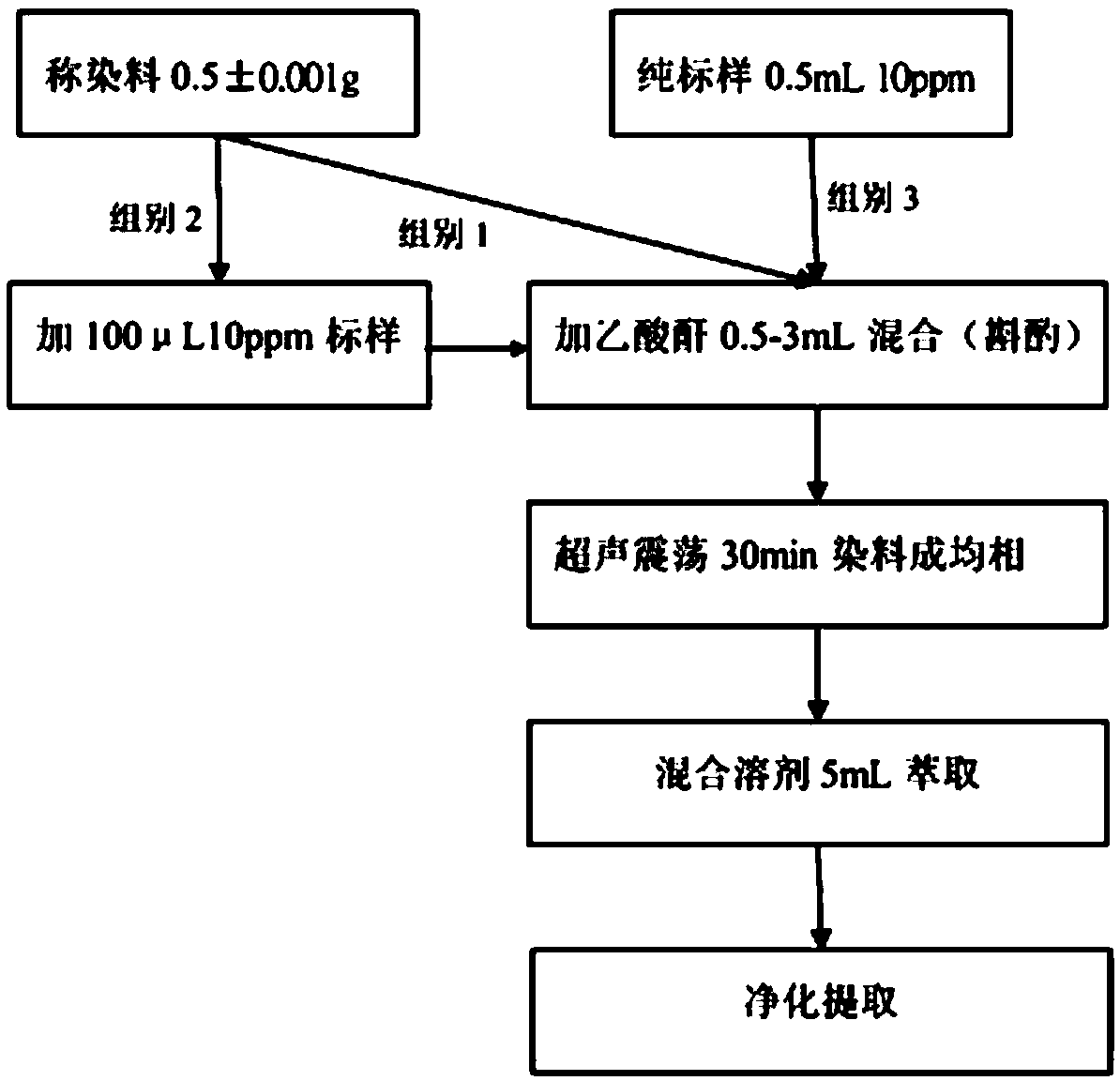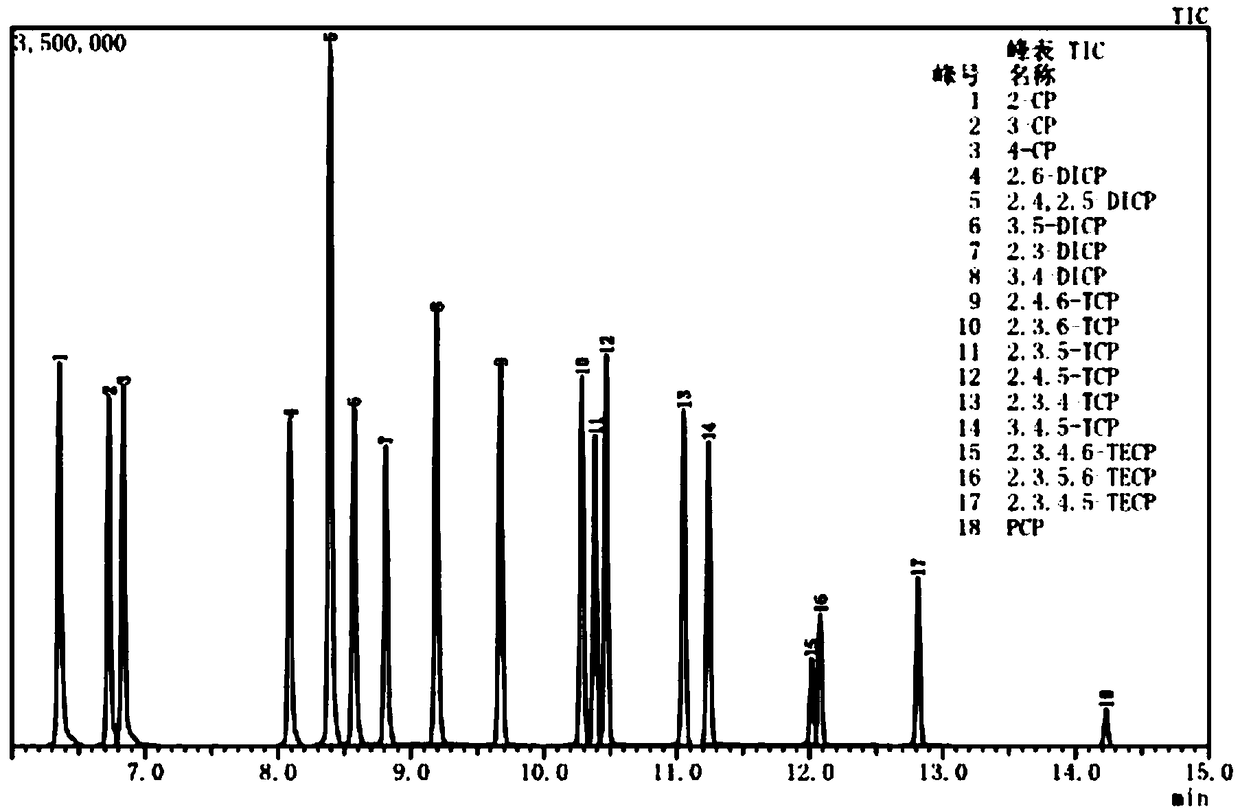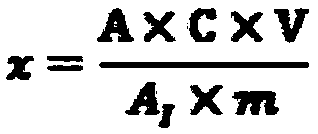Method for detecting chlorinated phenols in dyes
A technology of polychlorinated phenol and detection method, applied in the field of analytical chemistry, can solve the problems of incomplete dissolution of solvent dyes, misjudgment of judgment map quantification, difficult to remove impurities of extraction dyes, etc.
- Summary
- Abstract
- Description
- Claims
- Application Information
AI Technical Summary
Problems solved by technology
Method used
Image
Examples
Embodiment
[0085] Select Specimen Description
[0086] The extraction recovery rate in this experiment means that the sample selection is based on disperse dyes, mainly because it is the most difficult to dissolve in solvents and it is the largest type of dyes on the market. Other types of dyes have also been tested by this method, and the extraction effect is not much different from that of disperse dyes. However, other dyes have less impurities and can be adjusted by adding an appropriate dissolving solution according to the situation.
[0087] Sample description
[0088] In this experiment, the background sample, the background sample plus standard sample and the standard sample were considered in three combinations, and each set of data was repeated three times. If it is a general test substance, a solvent sample should be added for each measurement as a possible contamination consideration. as follows:
[0089] Group 1. Background sample: 1138 red (RUBINE XFTB, produced on Octobe...
PUM
| Property | Measurement | Unit |
|---|---|---|
| ionization potential | aaaaa | aaaaa |
Abstract
Description
Claims
Application Information
 Login to View More
Login to View More - R&D
- Intellectual Property
- Life Sciences
- Materials
- Tech Scout
- Unparalleled Data Quality
- Higher Quality Content
- 60% Fewer Hallucinations
Browse by: Latest US Patents, China's latest patents, Technical Efficacy Thesaurus, Application Domain, Technology Topic, Popular Technical Reports.
© 2025 PatSnap. All rights reserved.Legal|Privacy policy|Modern Slavery Act Transparency Statement|Sitemap|About US| Contact US: help@patsnap.com



